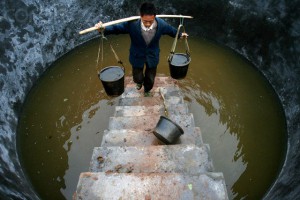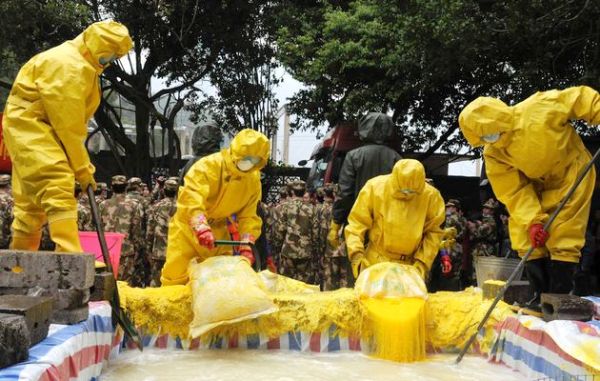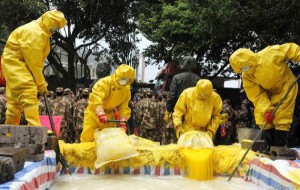20 tonnes of poisonous metal dumped into tributary of Pearl River
Vincent Kolo and Zhang Shujie, chinaworker.info
Disaster has struck again. Water supplies to millions of city residents have been put in jeopardy by yet another pollution scandal, this time on the Longjiang River in Guangxi province. The crisis began on 15 January, when several factories dumped cadmium and other industrial waste into the river. Cadmium is a carcinogen which can seriously harm the kidneys, bones and respiratory system. Due to bureaucratic bungling and suspected cover-up attempts, the 100-kilometer long toxic slick is still not under control despite clean-up efforts.
Rescue workers have tipped chemical agents into the water to break up the harmful metals, but this has only succeeded in neutralizing some seven tonnes of cadmium, according to Xu Zhencheng from the task force sent to the area by the Ministry of Environmental Protection. This leaves around 13 tonnes of the heavy metal still undissolved in the rivermore than two weeks after the disaster was first reported. Concentration levels of cadmium in the affected area remain more than 25 times above the official limit at the time of writing.
The chemical slick is flowing in the direction of Liuzhou city, home to 3.5 million people. The city has witnessed panic buying of bottled water, with supermarkets reporting sales of water at ten times normal levels, despite government assurances that the city’s tap water is safe for now. To dampen the growing anger among locals including fishermen, the government has closed a number of polluting factories along the river and arrested seven company executives. But this still falls far short of a comprehensive solution to the crisis.
Some experts say this could be the worst case of river pollution to have occurred in China for decades. Ma Jun, a Beijing-based environmental expert, described the pollution as serious because cadmium cannot dissolve naturally and may last a long time. Anger is growing among local inhabitants who are understandably skeptical to government assurances that water supplies are safe. As in previous cases of toxic dumping, the government is being criticised for lax enforcement of environmental checks and obsessive secrecy. Questions are being raised about why the Guangxi authorities have not yet identified the exact source of the contamination.
“It is apparently a glaring failure by local authorities to let the massive spill happen in the first place, not to mention the embarrassing fact that they cannot even pin down the pollution sources after two weeks,” said Professor Dai Tagen, an expert on metal pollution from Changsha.
 Concern is growing among ordinary people who fear that foodstuffs are poisoned, air quality is deteriorating from bad to terrible, and industrial policies disregard the environmental or social impact. In one study by the Lowy Institute for International Policy and the MacArthur Foundation, 75 percent of Chinese people said environmental problems such as climate change were a major threat to China’s security, a much higher proportion than those who thought the US posed a security threat (50 percent), and Japan (45 percent).
Concern is growing among ordinary people who fear that foodstuffs are poisoned, air quality is deteriorating from bad to terrible, and industrial policies disregard the environmental or social impact. In one study by the Lowy Institute for International Policy and the MacArthur Foundation, 75 percent of Chinese people said environmental problems such as climate change were a major threat to China’s security, a much higher proportion than those who thought the US posed a security threat (50 percent), and Japan (45 percent).





